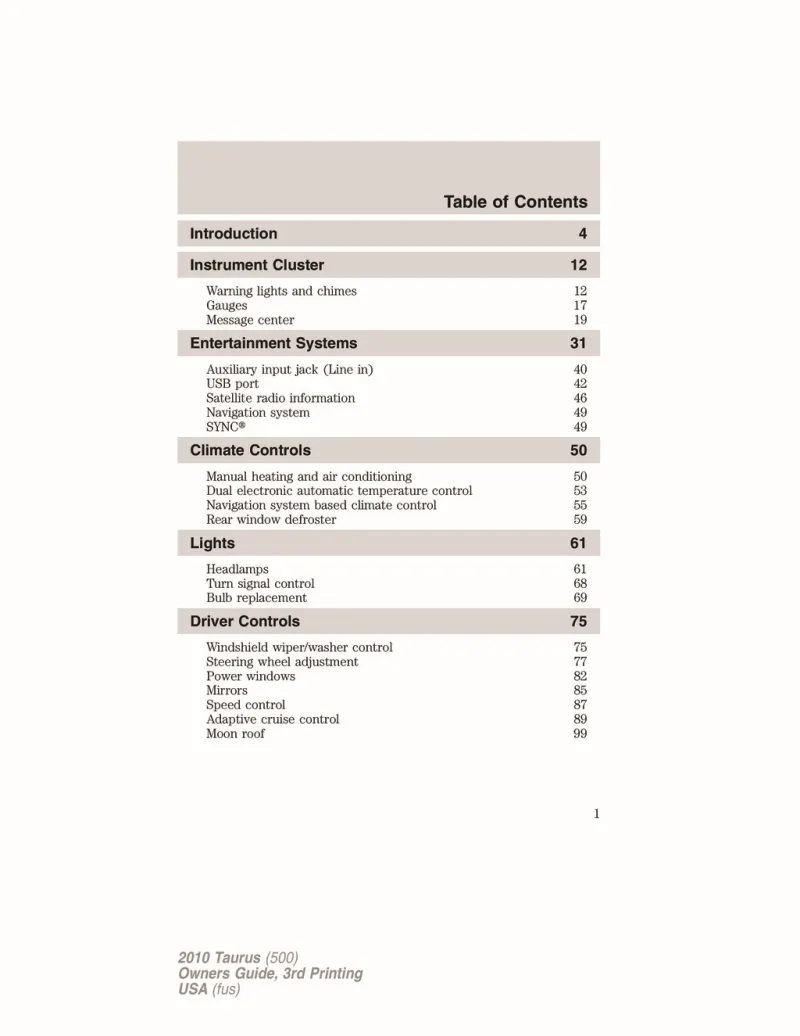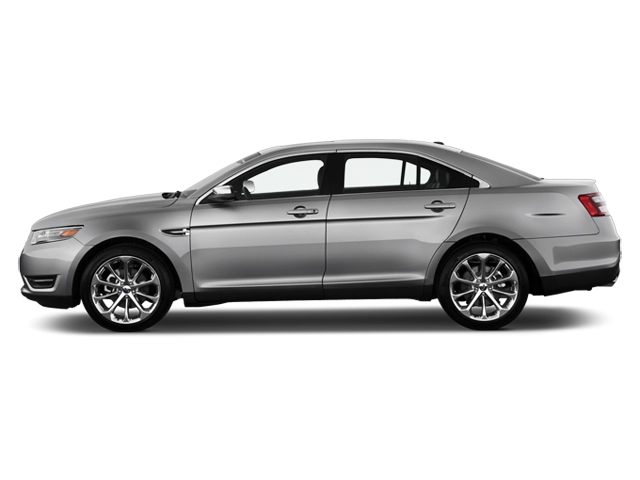2010 Ford Taurus Owner's Manual

Table of Contents
2010 Ford Taurus Overview
Introduction
The 2010 Ford Taurus marks a significant revival of Ford's classic full-size sedan, blending contemporary styling with advanced technology and robust performance. Designed to offer an upscale environment and a smooth ride, the Taurus aims to cater to families and commuters looking for comfort, reliability, and a touch of sophistication. With its bold exterior lines and refined interior, the 2010 Taurus stands out as a modern contender in the full-size sedan segment.
Powertrains
The 2010 Taurus offers two powerful engine options designed to meet varying performance needs. The standard engine is a 3.5-liter V6 that produces an impressive 263 horsepower and 249 lb-ft of torque. For those seeking a more thrilling ride, the Taurus SHO (Super High Output) variant features a 3.5-liter twin-turbocharged V6 engine that churns out a remarkable 365 horsepower and 350 lb-ft of torque, delivering exhilarating acceleration. Both engines come paired with a smooth six-speed automatic transmission, providing seamless shifts and enhancing fuel efficiency during everyday driving.
Trims
The 2010 Ford Taurus is available in several well-equipped trims, including the base SE, mid-level SEL, and the high-performance SHO. The SE trim offers a strong value with standard features like keyless entry, full power accessories, and a sound system with a CD player. The SEL trim adds amenities such as dual-zone climate control, upgraded audio, and navigation options. The Taurus SHO takes luxury to the next level with sports-tuned suspension, leather upholstery, and advanced technology features, appealing to drivers who crave a sportier experience.
Features
The Taurus boasts an array of modern features aimed at enhancing safety, comfort, and convenience. Standard equipment includes advanced airbags, stability control, and traction control for a safer driving experience. Inside, occupants are greeted with a spacious cabin featuring high-quality materials, comfortable seating, and an intuitive dashboard. Optional features include Ford's SYNC infotainment system, a rearview camera, and heated front seats, ensuring that every journey is enjoyable.
Owner's Manual
The owner's manual for the 2010 Ford Taurus serves as an essential resource for owners, providing comprehensive information about vehicle operation, maintenance schedules, and troubleshooting tips. It covers various aspects, including safety guidelines, technology usage, and warranty details. Whether you're a first-time Taurus owner or a seasoned driver, the owner's manual is invaluable for maximizing your vehicle experience and ensuring its longevity on the road.
User manual download
The Ford Taurus owner manual for the 2010 model year is to be found in PDF downloadable format on this page. The owner manual for the model year 2010 is free and in English, but the repair manuals are usually not easy to get and may cost more.
Manual Questions
Fill the form below and someone will help you!

